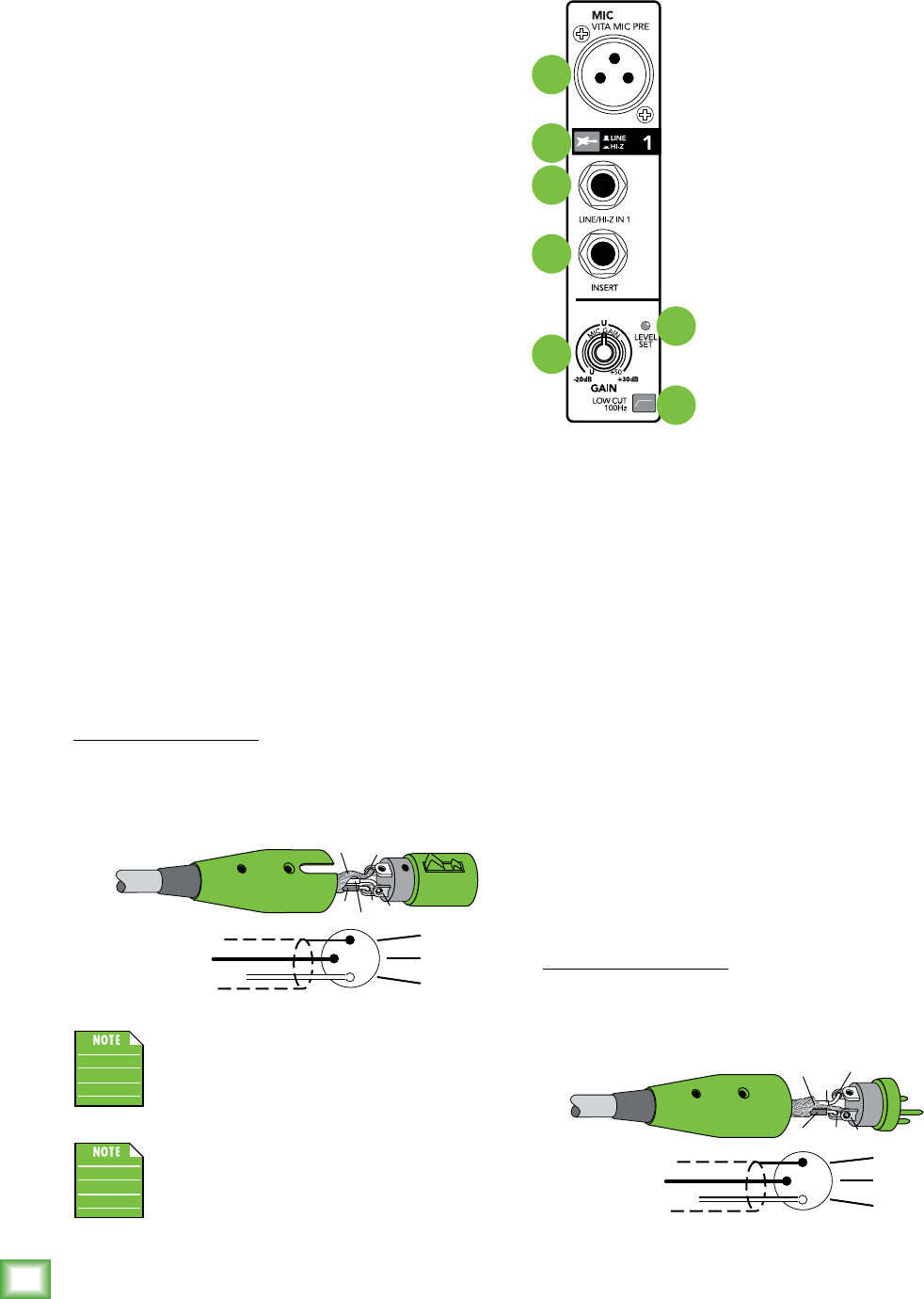
ProFX8v2 • ProFX12v2 • ProFX16v2 • ProFX22v2 • ProFX30v2
8
ProFX8v2 • ProFX12v2 • ProFX16v2 • ProFX22v2 • ProFX30v2
USB output FROM the mixer – recording, etc:
In the USB out section [ProFX16v2, ProFX22v2,
ProFX30v2] you may select either the main mix
(disengaged) or subgroups 1-2 (engaged) from
the conveniently titled USB out switch. The USB tap
points for the subgroups are pre-fader and signals
will show up on the DAW dependent upon how they
are panned on the channels.
In other words, if subgroups 1 and 2 are used to
submix drums and those drums have a stereo image
(e.g. overheads and toms channels are panned accord-
ing to desire), this stereo image is retained in the DAW
inputs. Any adjustments made to the subgroup drum
levels during the show only pertain to the live show
itself; recording levels are not adjusted in the
DAW unless they are adjusted on the channels.
Likewise, it is possible to record the main mix to
take home a copy of the live show. These levels are
also pre-main fader. Therefore, levels may be mixed
up or down in the DAW later depending on the needs
of the recording versus the live show. The end result
is that fade-ins and/or fade-outs made during the
show do not affect recorded levels.
4. Main L/R XLR Outputs
The male XLR connectors provide a balanced
line-level signal that represents the end of the mixer
chain, where the fully mixed stereo signal enters the
real world. Connect these to the left and right inputs
of your main power amplifiers, powered speakers,
or serial effects processor (like a graphic equalizer
or compressor/limiter).
They are wired as follows, according to standards
specified by the AES (Audio Engineering Society):
XLR Balanced Wiring:
Pin 1 = Shield (ground)
Pin 2 = Positive (+ or hot)
Pin 3 = Negative (– or cold)
The main L/R XLR outputs are located on
the rear panel of the ProFX8v2 and ProFX12v2
and on the front panel of the ProFX16v2,
ProFX22v2, and ProFX30v2.
The XLR outputs are 6 dB hotter than
the TRS outputs.
2
1
SHIELD
COLD
HOT
3
SHIELD
COLD
HOT
3
2
1
ProFXv2 Front
Panel Features
Connections and Channel Strip
The vertical channel strips look very
similar, and have only a few differences
between them. Each channel works
independently, and just controls the
signals plugged into the inputs directly
above them.
5. Mic Inputs
ProFXv2 mixers use 3-pin female
XLR connectors on all microphone
inputs, with pin 1 wired to the
grounded (earthed) shield,
pin 2 wired to the high (hot
or positive polarity) side of
the audio signal and pin 3 wired
to the low (cold or negative
polarity) side of the signal.
These female XLR connectors
accept balanced mics or line level
inputs from almost any type of source.
The Vita mic preamps feature higher fidelity and
headroom rivaling any standalone mic preamp on
the market today.
We use phantom-powered, balanced inputs just like
the big mega-consoles, for exactly the same reason: This
kind of circuit is excellent at rejecting hum and noise.
Professional ribbon, dynamic, and condenser
mics all sound excellent through these inputs.
The mic/line inputs will handle any kind of level
you can toss at them, without overloading.
Microphone-level signals are passed through
the mixer's splendid microphone preamplifiers
to become line-level signals.
They are wired as follows, according to standards
specified by the AES (Audio Engineering Society).
XLR Balanced Wiring:
Pin 1 = Shield (ground)
Pin 2 = Positive (+ or hot)
Pin 3 = Negative (– or cold)
ProFX8v2
ProFX12v2
5
6
7
9
10
11
12
2
3
1
SHIELD
COLD
HOT
SHIELD
COLD
HOT
3
2
1


















